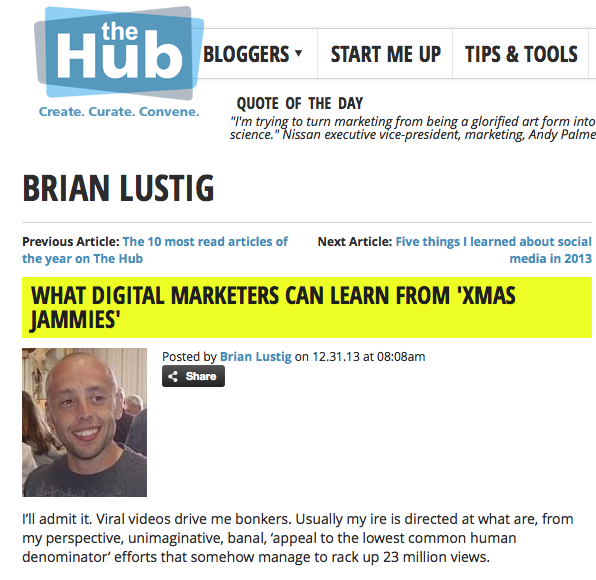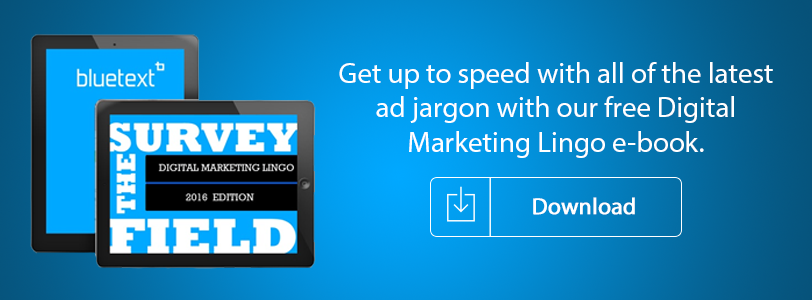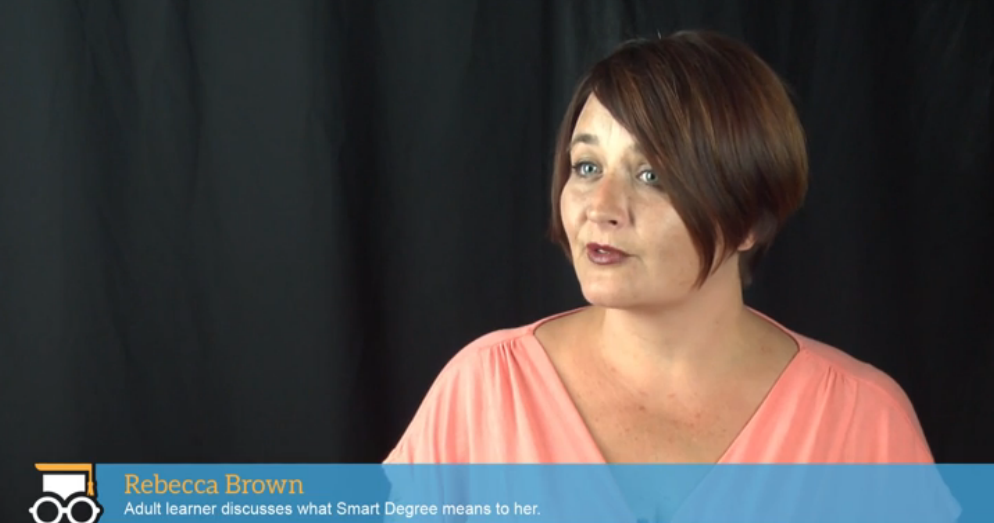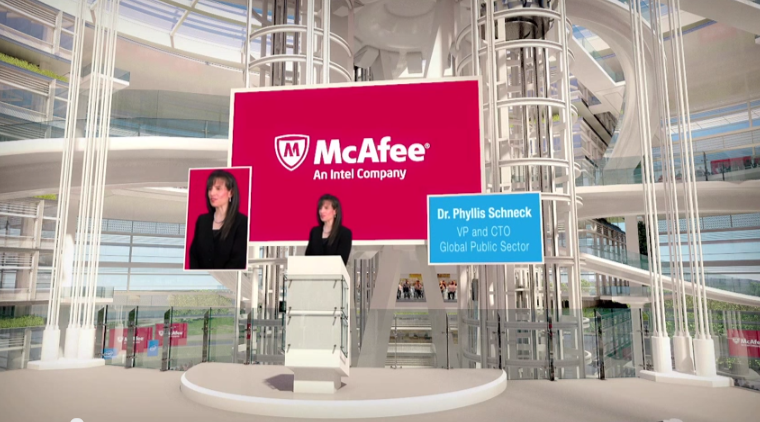Given the sheer amount of content playing across social media feeds in today’s online landscape, producing eye-catching, dynamic content is a must.
In order to stand out from the crowd, businesses across many different industries are increasingly turning towards creative motion to catch the attention of potential customers on social networks like Facebook and Twitter.
Why animated business video?
While there’s nothing wrong with relying on static images on your business’s social media, there’s a limit to the story you can tell, and what your potential customers can take away from a single picture or photo.
Images can only provide a limited amount of information, and are confined by their own borders to a relatively small amount of creative content. What audiences immediately see in an image is all they’re going to get.
By integrating creative motion video into your social media strategy, you gain an important tool for not only conveying more information to your potential customers, but also providing them with more eye-popping, creative content that tells a story.
While you could go with live action video, this choice, like sticking with photos and images comes with a lot of productive and creative limitations.
Animation, on the other hand, has near-infinite creative possibilities to tell your story, none of which are limited by the need to use live actors or film production equipment.
As a result, animated video is more likely to catch the attention of internet users, 50% of whom look for videos related to a product or service before visiting a store (Insivia).
Paya
We helped Paya revamp their social media pages on Facebook, Twitter, and Instagram with brand new creative motion animations like the these two:
Provide a truly modern #payment experience, wherever you do business. Choose Paya to integrate #omnichannel payment solutions, together with #ERP system insights to harness the maximum consumer potential your brand can offer. pic.twitter.com/fZt4RSHInV
— Paya (@payaHQ) May 25, 2018
Balancing concision and content delivery was critical for making sure these posts kept the attention of users while maintaining their creative charm.
Though each animation is only about 10 seconds long, the descriptions link to a longer article promoted by the video.
These posts are meant to draw in potential clients with concise, creative flair and deliver them straight to Paya’s website, where they can find more helpful articles, and a wealth of information on all the services Paya provides.
Here are three strategies for ensuring your use of animated video on social media is as effective as Paya’s.
- Take advantage of creative motion
To catch the attention of scrolling social media users, it’s critical to stand out. One way to do that is by creating highly dynamic content that creates a contrast with the still images around it. Creative motion describes content that doesn’t just use video but is full of movement set in a creative environment or background. Creative motion videos are striking and fun to watch meaning users are more likely to stop and take a look at your content.
- Use colors that pop
Along with making sure you content is full of movement, you want it to pop against the dreary grey and whites of platforms like Facebook and Twitter.
Paya uses bright colors like green, orange, and blue that catch people’s eyes and keep them watching. Experiment with different color schemes and choices to find a combination that is vibrant and pleasant to look at. Catching users’ eyes with lots of movement and bright colors is especially key for video content on social media where you’re competing with so much other content for consumers’ attention.
- Concision is a must
A recent study found that the average attention span is now around 8 seconds. That you means you have very little time to get and hold your audience’s attention. We recommend following Paya’s lead and limiting your social media video and animation content on social media to around 10 seconds to ensure potential customers don’t scroll on before you’ve gotten your message across. While a video on another platform, like on your own website, can of course be longer than 10 seconds, your social media strategy should focus on drawing users in with very short investments of their time and then exposing them to more involved content once they have left social media.
Using creative motion video on your businesses’ social media pages is an excellent way to draw in consumers with rich, but easily digestible content.
Balancing concision and compelling, creative content can be a challenge, but doing so successfully can be highly rewarding in terms of site visits and lead conversion.
| Learn how Bluetext can get results for your digital marketing campaigns. |
It’s almost January again, already! With 2017 almost behind us, amidst the holiday cheer and eggnog, it’s also time to reflect on 2017. It goes without saying that today, changes in digital marketing happen within the blink of an eye. There’s simply no better strategy for your business than a continual adaptation; the years of resting your laurels with time-tested methods are long gone. What works best with digital simply changes too fast, and nothing is really stable.
With that in mind, we know how busy you are this time of year, so we’ve gotten together and brainstormed what we believed to be a list of the most important digital marketing trends for 2018. It’s a big list, but we’ve narrowed it down to just a top four. We invite you to take a look — if only to just keep up with the ever changing modern media environment.
Contact us Today!
Bluetext’s Chief Creative Officer, Jason Siegel will be speaking at MediaPost OMMA VR/AR in New York during Advertising Week on September 28th.
MediaPost saw the need for an event focused solely on Augmented and Virtual Reality as these new mediums have taking the marketing world by storm. The event will explore how marketers can take Virtual and Augmented Reality from the novelty phase into an opportunity to enrich branding and deepen consumer relationships.
Jason will be part of a panel discussion titled “Retailers Follow Pokémon Go”, which will examine the overwhelming success and influence of Pokémon Go, and how retailers can learn from this case study and incorporate AR or VR experiences into their marketing strategy to appeal to in-store shoppers.
Other topics the event will cover include:
- How different types of VR/AR experiences map against specific brand goals.
- Where do you start…small?
- How to distribute experiences efficiently and connect VR/AR campaigns to other marketing platforms and programs.
- Who are the players and how should marketers and agencies vet them?
- Storytelling in 360 degrees
Make sure to tune in for the conference live-stream on September 28th at 4:00pm EST here. And to learn more about Bluetext’s VR work, contact us today:
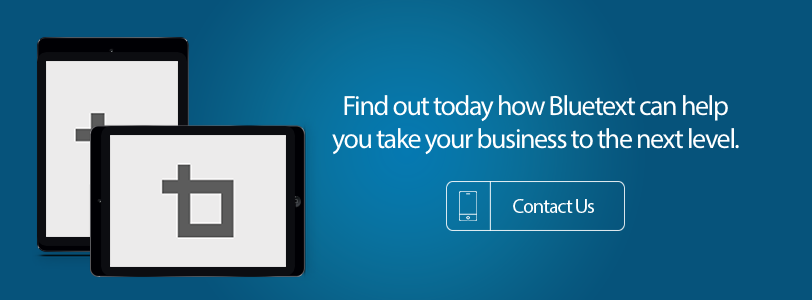
One of the most popular video series anywhere right now is comedian Jerry Seinfeld’s “Comedians In Cars Getting Coffee,” where Jerry takes other comedians out for rides in classic cars, and then they get coffee. It sounds simple, but it’s very funny, and very well-done. But what’s unique about the series is how it is designed: The videos are made first and foremost to be seen on mobile devices, not on television sets or even desktops or laptops. These aren’t just “mobile-friendly,” they were shot on video for the very small screen.
Once you know that, you can watch and see how that is done. All of the shots are tight on Jerry and his guests. Images of people and cars fill up the screen. Colors are rich and saturated, coffee cups are shown in close up, even the froth of the cappuccino is given over to the screen. There is no small type to get lost or details that can’t be seen on a small device. And while they still look good on larger screens, this is a mobile-first design in its purest form.
What does “Comedians in Cars” tell us marketers about video campaigns?
Number one, it’s a clear sign that consumers are comfortable ingesting rich content in its most compact form—on the small screen of a mobile device. If Jerry Seinfeld is creating for the smallest of video sizes, then that is where the audience is moving. And if marketing is going to reach this audience, it needs to create content that works well in that format.
Number two, creating a mobile-friendly video cannot be an after-thought. Every aspect of the design of the video, from concept and storyboard to shooting and post-production, must contemplate the mobile device as the primary focus. Not only must all of the key images be seen in tight focus, but any calls-to-action must be large and easy to read. Text must be minimal and clear. Subtlety is not your friend. Actions must be obvious and dialog crisp.
Number three, and assuming the video will be hosted on your company website, the video player must be capable of managing a responsive video, and your video size must be device agnostic. Your video content should be visible on an iPhone, a larger mobile device and a large monitor.
Number four, choose a bold image for your splash screen while the video is loading. It will draw viewers in and it’s good for search as it will make your video easily recognizable. Here’s an example of a bold splash screen image:
Finally, think carefully about your Call to Action. CTAs in videos on a mobile device may not be clickable. If you are unable to create a clickable CTA, consider a CTA that’s external to the video but still on the landing page.
As consumers rely on their mobile devices for gathering the information they need to make purchasing decisions, a video that is truly mobile first can move you ahead of the competition.
Apologies in advance if you now have the 1981 Olivia Newton-John classic stuck in your head for the rest of the day. If you live on the East Coast you have no doubt been getting “very physical” the past few days if you catch my snowdrift. After all, it’s hard work moving bottomless mounds of snow from one heap to another. What did you think I referring to? C’mon now, let’s keep it kosher.
Digital marketing became increasingly essential to consumer marketers in 2015, but there is strong evidence that digital is being elevated from just another item in the CMO toolbox to a pervasive ingredient to all marketing activities.
Exhibit A is findings from the Gartner 2015-2016 Chief Marketing Officer (CMO) Spend Survey, that focused on business leaders responsible for marketing – digital marketing in particular – across 339 large and extra-large (whatever that means) companies in North America and the U.K. A whopping 98% of CMOs consider digital marketing mainstream and that online and offline marketing are merging.
Commenting on the results, Yvonne Genovese, group vice president at Gartner, notes: “Marketers no longer make a clear distinction between offline and online marketing disciplines. As customers opt for digitally led experiences, digital marketing stops being a discrete discipline and instead becomes the context for all marketing. Digital marketing is now marketing in a digital world.”
In our marketing projects with leading consumer, business and public sector organizations, we are seeing significant demand for the “digitally led experiences” that Gartner references. There are a few digital marketing trends in particular that consumer marketers should keep their eyes on in 2016:
Smartphone ad geo-fencing
Consumer marketers recognize the need to map digital marketing into the consumer buyer’s journey when these digital assets can have the biggest impact. At what moment and location will the consumer be most inclined to play a video, read a text message or view an in-app ad? Smartphone ad geo-fencing enables marketers to reach an audience when they are most receptive to your brand, product, or service marketing.
Think about a consumer’s mindshare when entering an airport. In the traveler waiting for a flight, you have a captive audience thinking about various aspects of their business or leisure travel. Do they need accommodations, transportation, dinner reservations, or other concierge-type services? Smartphone ad geo-fencing can feed location-based ads to travelers once they enter an airport at a time when they are primed to take action.
Virtual Reality
Yeah, yeah, you’ve been hearing about virtual reality headsets for years. But VR is primed for mainstream in 2016. Oculus Rift has set an April release, in addition to other planned releases for HTC Vive and Playstation VR, are poised to put VR in the hands of consumers for hundreds – not thousands – of dollars. But the fact is that consumers don’t need to even shell out this kind of cash to experience virtual reality.
My colleague Michael Quint recently blogged about how Bluetext is leveraging Google Cardboard to bring virtual reality to the masses. Today, we are designing a digital briefing center for a client in virtual reality by marrying, in Michael’s words, “our creativity, advanced video capabilities, and cutting-edge app development to help a software company more effectively tell its story.” In this case it’s a b2b company, but we fully expect b2c virtual reality projects to become increasingly commonplace as the year progresses.
IoT
Consumer marketers are not alone in trying to get their hands around the Internet of Things, and how to leverage IoT for digital marketing efforts. In my end-of-year blog post, I looked at the IoT opportunity for digital marketers in 2016, and what it comes down to is that marketers will be able to capture a growing volume of data on consumer behavior and consumption patterns from connected devices and sensors, and then engage with consumers more effectively based on this data.
Marketing Automation
In a Forrester report, “2015: The Year of the Big Digital Shift,” more than half of marketers admitted their digital marketing is more tactical than strategic. Digital marketers are a victim of their own excess: Forrester reported that investments in marketing technology grew 3.4 percent in 2014 and is projected to rise another 4 percent this year. So consumer marketers will not lack for tools and options, but 2016 is the year when CMOs and their teams must invest time to identify the optimal set of tools to catapult their initiatives. They also most move beyond an understanding of the ‘basic’ capabilities of marketing automation tools, and shift from students to experts fully versed in the in’s and out’s of marketing automation.
A few months ago my partner Don Goldberg got a Google Cardboard viewer and was showing it off around the office but was not getting much of a rise out of the team. Maybe we all thought Virtual Reality was too far out there and the hype of Oculus Rift was overblown. Fast forward to early November and I got a Google Cardboard viewer packaged with my Sunday New York Times at home (yes, we still get the Sunday Times!). I downloaded the app and was immediately transformed. Being in the visual storytelling business, I knew that a seismic shift was beginning. Video was no longer just video. VR transformed the story, brought the user (me) into the story, and created an experience that everyone in my family was amazed by. With the price point of the Cardboard viewers it would not create a barrier for marketers to reach their audiences, even in the b2b world.
To quote Google’s news release from October: “Google Cardboard is bringing virtual reality worldwide. Starting today, the Google Cardboard app is available in 39 languages and over 100 countries on both Android and iOS devices. Additionally, the Cardboard developer docs are now published in 10 languages to help developers build great VR experiences. With more than 15 million installs of Cardboard apps from Google Play, we’re excited to bring VR to even more people around the world.”
The conversations inside our agency quickly moved to figuring out how to make VR a reality for our clients. Virtual reality could be the next medium for us to do creative storytelling. As a company focused on visual storytelling married with advanced development (see our work for brands like Workday, Adobe, and Jones Lang LaSalle), it was the perfect storm.
Fast forward two months and today we are designing a digital briefing center in Virtual Reality. We are marrying up our creativity, advanced video capabilities, and cutting-edge app development to help an enterprise software company more effectively tell its story. We see virtual reality as more than games and entertainment. We see it as a platform to tell stories in a fun and engaging way.
From what I can tell there are very few agencies doing virtual reality. We are diving in headfirst. With the launch of Google Cardboard we have an opportunity to help our clients tell their story like never before. That is the business we are in and that is what sets us apart.
When it comes to where a brand should spend its video ad dollars, YouTube has long been the go-to destination. With more than 3 billion video views per day, content producers direct the majority of its efforts here – and unsurprisingly the advertiser budgets have followed.
But this presumption is being seriously tested by a video traffic explosion – chronicled in great detail by Fortune magazine writer Erin Griffith – underway at Facebook. Facebook users are watching 4 billion video streams a day, which is a 4x jump from just twelve months ago. Granted, Facebook counts a “view” as any video that plays for three seconds, which means that users scrolling down their feed and allowing a video to briefly auto play before moving on inflates the view total. Nonetheless, 4 billion is 4 billion.
Fortune’s Griffith goes into some of the reasons behind social network’s video success – which unsurprisingly includes efforts by engineers to adjust algorithms that make it not only easier to watch videos, but also to share them. While Griffith’s focus is on how all of this impacts advertisers and where they spend their money, Facebook’s rapidly growing impact with video presents a conundrum for B2B and B2G brands and the public relations/marketing firms that represent them.
In evaluating the major social networks and where to focus resources, investment and, most importantly, content, Facebook typically comes up last for firms seeking to influencer decision makers across government and businesses. Sure, everyone is on Facebook, so it goes, but the working assumption is that the largest social network is where you go to view new pics of the grandkids or post updates from the beach – not to consume B2B/B2G focused content.
Griffith’s article supports as much when it comes to videos, with the author pointing out that, “…Facebook’s biggest advantage over YouTube and other video providers may be boredom.” Griffith suggests someone lands on a YouTube video either because they are searching directly for it or a related topic, or a video being shared is ultimately sourced on that site. With Facebook, most of the time we are watching videos because we are killing time on the site and it is just another thing to do.
Because Bluetext works with so many B2G and B2B firms, social media strategy comes up quite a bit. Often, recommendations lean towards LinkedIn, Twitter and YouTube depending on the ultimate goal and category of decision makers the client is trying to reach. Even with B2B and B2G clients for whom we are not supporting social media, Facebook is usually trailing the pack in their social efforts.
But the fact is that Facebook drives one-quarter of all web traffic, and its video traffic explosion demands B2B and B2G firms reevaluate how best to use the site with video content. Is it ideal for placing corporate marketing, event or deeply technical product and service videos? No, absolutely not. But are there times when Facebook, rather than YouTube, should be ground zero for launching a more consumable brand humor video or engaging content that can be easily viewed – and shared – across Facebook and then on to other destinations? 4 billion video streams a day say yes, and going forward B2B and B2G brands may be saying yes as well.
Video has become an essential element in nearly every integrated marketing campaign. Whether it’s to highlight a key executive or subject expert, capture a discussion that demonstrates leadership on a topic or issue, or provide a better explanation of a complicated subject, video delivers a strong platform from which to tell a story.
The challenge with video is that it can be of poor quality and doesn’t hold the audience’s attention when not done well. While it may seem simple to set an executive behind a desk and start running the video camera while he or she starts talking, there are a lot of stumbling blocks when taking this easy path. Offices and even conference rooms can be cramped, making it difficult to get the best angles. The lighting is always uneven. Shadows in the wrong places are a constant issue. And if you’re doing a series of video interviews, each office will look and feel different on camera. In addition, sound quality is particularly hard, especially in today’s modern offices where air is constantly moving through the ventilation systems. While often barely audible in person, lavaliere microphones are extremely sensitive and amplify that hidden sound.
A better solution is getting the individuals out of their office and putting them in a controlled setting before a curtain or green screen. This approach offers a number of important advantages for a compelling and quality video experience:
1) The lighting will be consistent across every video. Shadows can be controlled, and office clutter is removed from the scene.
2) Audio can be controlled, with ambient sound kept to a minimum.
3) Backdrops, colors and tones can be chosen to meet the mood of the topic or the intended feel of the interview.
4) Multiple cameras can be more easily used, offering more interesting ways to edit the final piece.
5) Multiple videos in a series can have a similar look and feel, making them look like part of the package rather than random takes shot in different locations.
Bluetext often uses black curtains as well as green screens to achieve the right look for our clients’ videos. Here are a few examples that should get every marketer thinking about a better way to capture executives, thought leaders, experts and customers as part of successful marketing campaigns.
Use the Background to Set the Tone. For the launch of a new program called Smart Degree that enlists adult learners in college courses to complete their degrees, the education services company Nelnet enlisted Bluetext to capture a single mother explaining her challenges in obtaining those college credits. Because this was about those struggling to improve their career and economic status, we chose a heavy black curtain for a serious tone. We shot the video with two cameras, one from the front and a second with a side perspective, to give us room for close-ups and for editing. While we didn’t use an interviewer in the shoot, we had the mother look slightly off-camera to suggest that she was engaged in a conversation explaining her personal challenges. We shot four different takes, and the two-camera shoot made the video more interesting to watch and easier to edit. We added a hint of soft focus to soften the features and tone down the intensity of the lighting.
For a second video in the series, we took a different approach. This time, we were capturing a university executive explaining the value and benefits of the Smart Degree program. We used a green screen and chose an off-white background in post-production. This color selection gave a totally different tone to the video, offering an upbeat perspective on the value of Smart Degree. It also allowed us to decrease the contrast and add warmth to the final product.
Combine a Green Screen and a Backdrop for a Series of Interviews. For a campaign aimed at the Federal market, NetApp and Thundercat asked for a series of five experts to discuss ways for agencies to consolidate their data centers for more efficiency and to meet government mandates. We created a network interview environment, emulating Charlie Rose and the way he uses a dark studio to impart a sense of gravity and weight to his interviews.
Using a long black curtain to absorb light and give a sense of “infinity” to the scene, for each interview we placed the expert at the far corner of a conference table and focused one camera slightly off-center at their face. I played the role of the interviewer, lofting broad questions that allowed them to talk about the subject. The second camera was slightly over my shoulder, setting up the interview scene. We also captured long-shots of the two of us talking before the interview began. To introduce each segment, we enlisted the services of a well-known journalist and influencer in the government technology space. We placed him before a green screen to make the short introductions, and then overlaid those shots onto the interview long-shots. The effect is as if the he were in the studio with us.
This approach serves several purposes. First, it allows each of the interviews to have the same look and feel so they don’t seem random or disjointed. Second, the black curtains bring a professional tone to the videos. And third, the interview style and introduction make the segments more interesting and engaging to the audience.
Try Something Different to Keep the Audience Engaged. Technology giants McAfee and Intel were looking for a more interesting way to provide video lectures when highlighting their new solutions. As an alternative to capturing their experts behind a podium, we created an entirely different look and feel. We captured each expert in front of a green screen as if they were speaking before a large audience. A still of the first frame of each video was captured and placed inside a digitally-created, 3-D modeled “Agency of the Future.”
As the visitor to the site moves around the virtual building, they can select from each of the discussions by clicking on the still image. That image immediately comes to life as the video begins to play, and simulates a live presentation. As an added feature, we also placed the video inside a larger monitor screen in each video scene next to the speaker, similar to how jumbo screens are used in large auditoriums. That added feature gives visual interest and a touch of reality to a virtual environment. The Agency of the Future has been a huge success for Intel and McAfee, with visitors staying on site far longer than other campaigns they had run.
Video should be interesting, engaging and compelling to be effective. Understanding the options and the value of backdrops, curtains and green screens can make the difference between having your customers take notice and losing their interest.
By now, you may be one of the more than 13 million YouTube visitors who have viewed the clever, genuine yet very purposeful Xmas Jammies video, or saw it on any number of major broadcast outlets that picked it up. For marketing, creative, and PR professionals, viral videos can be maddeningly elusive. There are some characteristics universal to viral videos, but just as many that fall In the excerpt above, he discusses the technical problems with the federal health anthem insurance marketplace website and what his administration is doing to help consumers get enrolled in an anthem insurance plan. outside the blueprint as well.
In my latest article for PR Week “The Hub,” I take a look at some reasons why Xmas Jammies took off, and what digital marketers can learn from its success.
